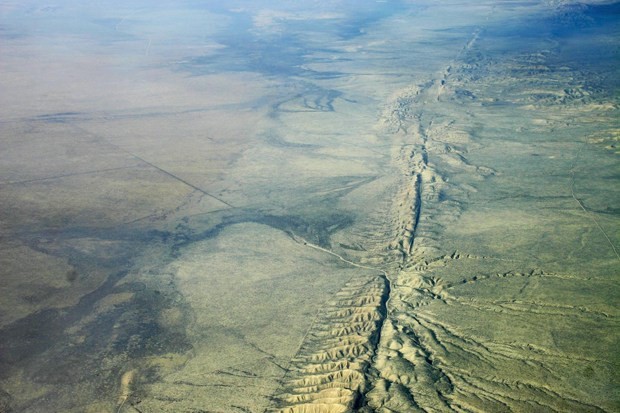Scientists now suggest that tides that are caused by the sun and moon's gravitational pull can apparently trigger earthquakes, especially along the San Andreas Fault in California. More specifically, scientists say that earthquakes especially those with low frequencies that produce tremors deep below the Earth's crust, are most likely to occur when tidal forces are strengthening or waxing.
Rising and falling of sea levels known as tides that occur every month are basically caused by the gravitational forces at play originating from the sun and the moon on our planet. However, not only oceans and seas are affected by this phenomena but it also causes a compression and stretching of the Earth's crust.
According to seismologist and geophysicist, Nicholas Van der Elst from the U.S. Geological Survey's Earthquake Science Center in California, when the moon is pulling in the same direction where the fault is also slipping, this causes even more slippage to the fault. This shows that the fault is extremely weak, and much weaker than expected, even if there are 20 miles of rock layers on top of this, he adds.
In this new study, researchers have examined 81,000 low frequency earthquakes that hit along the region of San Andreas Fault in California between 2008 and 2015. These low frequency earthquakes are also considered as not exceeding magnitude 1 on the Richter scale.
Scientists explain that tidal waves have varying strengths that depends on a two week or fortnight cycle. Spring tides are known as the strongest tides and these occur when the moon and sun are aligned. On the other hand, neap tides or the weakest tides occur when the sun and moon are in perpendicular positions to each other, in relation to Earth.
Results revealed that low frequency earthquakes do not increase during the strongest tides in a fortnight, yet they increase when the tide strengthens or during waxing.
Van der Elst explains that these two kinds of earthquakes are most prevalent during days when tides are bigger than the previous day's tides during its greatest or highest amount. This would mean that the fault gets loaded with the full strength of the tides, and it can also show how long it takes before these earthquakes recharge again, and how fast the fault can accumulate stress.
Researchers sat that this new study can provide a better understanding of the nature of earthquakes, and especially give more clues about when and where bigger earthquakes are most likely to strike.
This new study is published in the journal, Proceedings of the National Academy of Sciences.



























